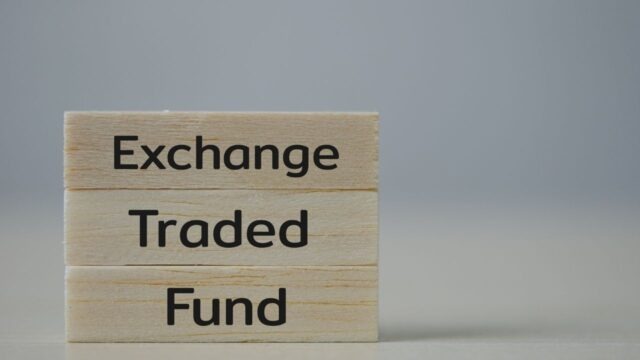
What is an ETF and how does it work
ETFs are exchange traded funds. ETFs are a type of investment fund that hold a basket of securities, such as stocks, bonds, or commodities, and trade on an exchange like a stock. ETFs offer investors exposure to a wide range of asset classes and investment strategies. ETFs are one of the fastest-growing segments of the financial markets. ETFs typically have lower fees than traditional mutual funds, and they can be bought and sold throughout the day on an exchange. ETFs also offer greater tax efficiency than traditional mutual funds. ETFs are popular with investors who are looking for low-cost diversification, as well as with traders who want to take advantage of market volatility. There are more than 5,000 ETFs available globally, with assets under management totaling more than $4 trillion. ETFs are becoming increasingly popular with both individual and institutional investors.
The benefits of investing in ETFs
Exchange Traded Funds, or ETFs, are becoming increasingly popular with investors. There are several reasons for this. First of all, ETFs offer a great deal of flexibility. Unlike traditional mutual funds, which can only be bought and sold at the end of the day, ETFs can be traded throughout the day. This means that investors can take advantage of market fluctuations to buy or sell their shares. In addition, ETFs typically have lower fees than mutual funds, making them more cost-effective for investors. Finally, ETFs offer a wide variety of investment options, allowing investors to choose the right mix of assets for their goals. With all of these benefits, it’s no wonder that Exchange Traded Funds are becoming a popular choice for savvy investors.
The types of ETFs available on the market
The types of ETFs available on the market include:
- Equity ETFs: These ETFs invest in stocks, and provide exposure to a particular region or country, sector, or type of company.
- Fixed Income ETFs: These ETFs invest in bonds, and provide exposure to a particular region or country, sector, or type of company.
- Commodity ETFs: These ETFs invest in commodities, such as gold, oil, or agricultural products.
- Currency ETFs: These ETFs invest in foreign currencies, and provide exposure to a particular currency or group of currencies.
- Alternative ETFs: These ETFs invest in alternative investments, such as hedge funds, real estate, or private equity.
How to choose the right ETF for your investment portfolio
When it comes to investing in exchange-traded funds (ETFs), there are a wide variety of options to choose from. ETFs can be broadly categorized based on asset class, such as stocks, bonds, or commodities. Within each asset class, there are even more specific ETFs that focus on specific sectors or geographical regions. With so many options available, it can be difficult to know which ETF is right for your investment portfolio. However, there are a few key factors to consider that can help you make the best choice for your needs.
- You need to consider your investment objectives. What are you trying to achieve with your investment? Are you looking for long-term growth or income? Are you trying to protect against inflation or Volatility? Once you have a good understanding of your goals, you can start to narrow down the list of potential ETFs.
- You need to look at the fees associated with each ETF. Some ETFs have higher expense ratios than others, which means they will eat into your returns more over time. Be sure to compare the fees of several different ETFs before making a final decision.
The risks associated with investing in ETFs
ETFs have become increasingly popular in recent years, as they offer investors a simple way to diversify their portfolios. However, ETFs also come with a number of risks that should be considered before investing. One of the biggest risks is that ETFs are highly dependent on the stock market. If the stock market crashes, the value of ETFs will likely plummet as well. Additionally, ETFs are subject to market fluctuations, and their prices can fluctuate rapidly.
This means that investors could lose money if they buy ETFs when prices are high and then sell when prices have dropped. Finally, many ETFs are actively managed, which means that there are fees associated with them. These fees can eat into your investment returns, so it’s important to research an ETF before investing to make sure that its fees are reasonable. While ETFs offer a convenient way to invest, it’s important to be aware of the risks involved before you invest.
Tips for successful ETF investing
When it comes to investing in exchange-traded funds, or ETFs, there are a few key things to keep in mind in order to maximize your chances of success.
First, it’s important to make sure that you’re investing in ETFs that align with your investment goals. For example, if you’re looking for growth potential, you’ll want to focus on ETFs that invest in stocks. If you’re hoping to preserve capital, on the other hand, you may want to consider bonds or cash equivalents.
Second, it’s important to pay attention to fees and expenses. While ETFs are generally low-cost investment vehicles, there can be significant differences between various ETFs in terms of expense ratios. By carefully evaluating the fees associated with different ETFs, you can help ensure that you’re not overpaying for your investment.
Finally, don’t forget to diversify. Just as with any other type of investment, it’s crucial to diversify your holdings in order to reduce risk. By investing in a variety of different ETFs, you can help balance out your portfolio and protect yourself from market fluctuations. By following these simple tips, you can increase your chances of success when investing in ETFs.


































